TIME is perplexing stuff. I???m sitting in my car at the side of a Roman road, waiting for my wife to reappear from the house of a clock-mender. Hanging above his hedge is a white sign shaped like a clock on which is written ???Roman Road Clocks???. Lorries rumble by to Catterick, a place older than recorded history and enshrined in the war poetry of the Celts. Once the braying of mules, the chafing of shields and the marching of foreign feet were the dominant sounds. Now it???s traffic.
 Did the Romans have clocks? I don???t know. Did they have 24 hours in a day and 60 minutes to the hour, or did they mess around with them like they did the months? Perhaps the clock-mender knows. I should have told my wife to ask. She???s been in there fifteen minutes but it feels like an hour. Time ??? it???s elastic.
Did the Romans have clocks? I don???t know. Did they have 24 hours in a day and 60 minutes to the hour, or did they mess around with them like they did the months? Perhaps the clock-mender knows. I should have told my wife to ask. She???s been in there fifteen minutes but it feels like an hour. Time ??? it???s elastic.
Soon we???re motoring along another Roman road, the one that straddles the Pennines between Scotch Corner and Brough. My wife???s left her father???s clock (with its Westminster chimes and broken spring) with the clock-mender who, apparently, hates his job and is tick-tocking off the days to retirement. Funny that. You sort of have this impression that clock-menders are wizened old men cloaked in an air of patience as visible as pipe smoke. This one???s a bit restless, apparently. But he knows his stuff.
Today we???re heading for the Bronze Age. It???s not on any maps but I???ve a good idea where it is. You drive through the Roman period and the Iron Age and turn off as you???re approaching Late Neolithic. Then you look for one of those brown heritage signs south of the A66 above Scargill that points right to it. It???s all very straightforward.
In the dark depths of The Stang forest we pull up in a clearing where two elderly ladies are sitting on collapsible chairs. They have powerful binoculars on tripods, pointing up at the sky. Heaven knows what they are looking at. Perhaps that???s it ??? heaven. Maybe as we get older we begin to take more notice of it.

 The Stang forest wasn???t here 4,000 years ago, when Bronze Age man roamed the hillsides. There may have been a forest of native trees, but it wasn???t this dark and brooding blanket of alien conifers with prickly branches and tangy resin. And the track that takes us east towards Barningham Moor, shovelled from the earth by a post-war bulldozer ??? no sandled feet ever padded its surface hunting deer or herding sheep.
The Stang forest wasn???t here 4,000 years ago, when Bronze Age man roamed the hillsides. There may have been a forest of native trees, but it wasn???t this dark and brooding blanket of alien conifers with prickly branches and tangy resin. And the track that takes us east towards Barningham Moor, shovelled from the earth by a post-war bulldozer ??? no sandled feet ever padded its surface hunting deer or herding sheep.
But they???re in there behind the tree trunks, hovering in the shadows and watching us with their patient eyes, those Bronze Age people. I can feel them. And, occasionally, I hear one sniff or cough. It???s easy to mistake these sounds for the noises of birds and forest animals. But it???s THEM ??? or their spirits at least ??? crouching in ditches and banks of pine needles, wrapped in woolly cloaks the colour of peat. And as we pass, alerted to their presence but not bold enough to seek them out, they smile and wink at each other. Don???t ask me how I know this. It???s just one of those things. A gift, probably.

These are Bronze Age people scurrying away along the crest of the moor. Or at least I think they are

Just before leaving the forest, I discover this relic embedded in the track. I think it was used for channelling the Earth???s energies towards the standing stones. Either that or it was some sort of waymarker for people who had trouble finding their hut in the dark
I???ve lived within a couple of spear-throws of Barningham Moor for 16 years but have only recently been alerted to the Bronze Age remains scattered about its emptiness. I published an article on Long Meg, the stone circle near Penrith, a couple of months ago, and in response David Forster, of Bluestone Images, alerted me to the Bronze Age carvings above the A66. So here we are, late one blustery afternoon in the back end, my wife and I clumping along tracks and over springy turf in search of them.
Time isn???t an easy concept to get your head round. It tends to fog perspectives. There are stones up here ??? lots of them ??? that were decorated by sculptors during the Bronze Age, and the art has survived in the form of cup and ring carvings. The fact that we have pigeon-holed these people into a category known for the alloy that came to prominence during their era immediately lumps them into a mass as dense and cold as bronze itself.
But they were anything but a dense, cold mass ??? they were people, like ourselves, with a structured and far-reaching society. And it was a society that was knowledgeable, ambitious, creative, inventive, adventurous, passionate, sophisticated and artistic. If it hadn???t been all these things and more, we???d still be in the Bronze Age. We would not have progressed.
Climbing the grassy ridge of Eel Hill, just west of a summit called How Callon, we discover a boulder with a cup carved in its corner and a groove chiselled to the rim. The cup is brimming with rainwater. Further along the ridge is another rock. This too has a cup brimming with water and several rings ??? and rings within rings ??? carved on its surface. Their relevance has been lost in that thing called time.

 Some people believe the carvings had a religious significance; others that they were maps or waymarkers, or that they were associated with the dead, or with freshwater springs. I haven???t got a theory on the subject yet, though I???m working on one. I rather like the idea that they were for playing marbles, or a precursor of bar billiards.
Some people believe the carvings had a religious significance; others that they were maps or waymarkers, or that they were associated with the dead, or with freshwater springs. I haven???t got a theory on the subject yet, though I???m working on one. I rather like the idea that they were for playing marbles, or a precursor of bar billiards.
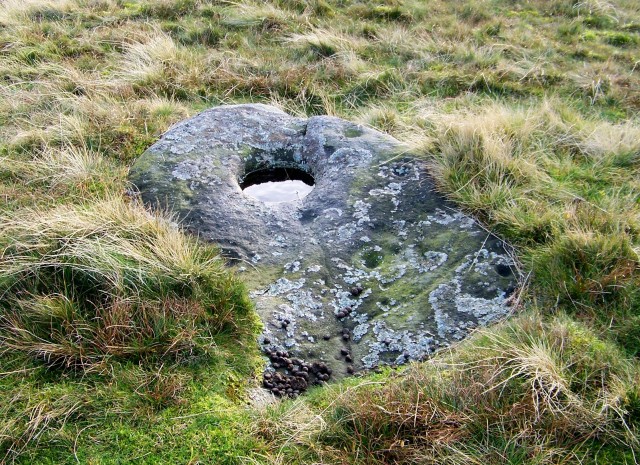

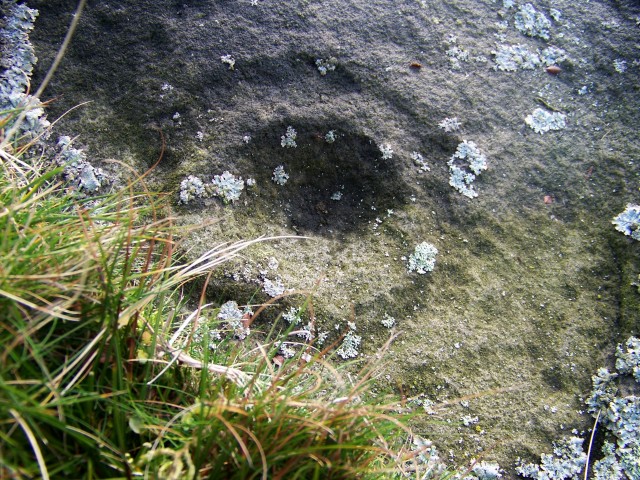 But then the sun balances on the Pennines and begins to sink behind the ridge. We???ve left it too late. Above us on the moor there is a stone circle, apparently. While below us, on a wild fellside that slopes down towards the River Greta, more stones lie in the turf ??? the most artistically-carved being discovered as recently as 2006. But they???ll have to wait for another day. Soon the afternoon will have faded into dusk.
But then the sun balances on the Pennines and begins to sink behind the ridge. We???ve left it too late. Above us on the moor there is a stone circle, apparently. While below us, on a wild fellside that slopes down towards the River Greta, more stones lie in the turf ??? the most artistically-carved being discovered as recently as 2006. But they???ll have to wait for another day. Soon the afternoon will have faded into dusk.
Time, despite its abundance, has just run out.
I???m going back soon in search of more stones. I can feel the stirrings of an obsession. Meanwhile, anyone interested in Bronze Age cup and ring carvings who would like to learn more should visit these sites:
- Stone Circles Org (Barningham Moor rock art)
- Barningham Moor Rock Art Field Trip
- Teddy Tour Teas Cup and Ring carvings




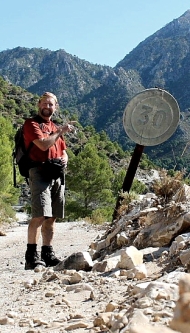










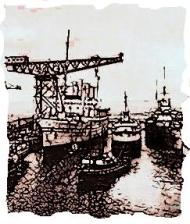
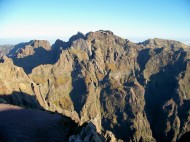
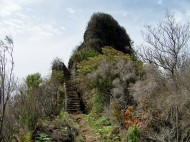





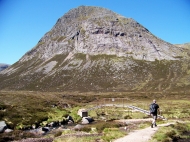


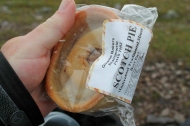
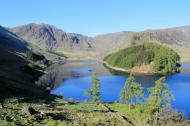


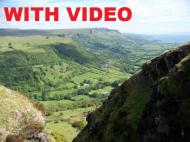
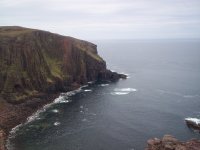
Walking along the forestry road on the SE edge of Loch Etive a couple of years ago, I came across random cat’s eyes for a few miles – it took me a while to realise that the track had been made with recycled road planings! Andy
It never occurred to me that road planings could be the source. It’s obviously a Forestry Commission practice. I came across a few old bricks as well, which suggests demolition sites are also a source of fillings for forestry roads. The archaeologists of the future will be really confused. Cheers Andy
Fabulous post! Archeology is an interest of mine. Your combination of hiking and history is a welcome read on a rainy blustery day. Almost as good as being able to get out and hike. Someday I hope to travel round the world to England and be able to see these sights for myself.
Diane, that’s a lovely comment. Thank you very much, and I hope you have good weather when you come over.
I`m a bit weird with regard to ye ancient thingies.I will go out my way to visit old hill forts,tumuli etc; but I prefer not to read or learn anything about them and just let my imagination take over when I sit and contemplate by them.
I came across a fantastic vitreous wall on a small island name of Eilean nan Gobhar opposite Rois-bheinn and there was a weird sense of wellbeing when sitting within.Must get the boat out again next summer as I promised myself I`d go back and spend the night there.
Which remeinds me,years ago in Glen Nevis there was an experiment run by a group of scientists trying to recreate a vitreous wall over the course of a summer.They failed :)
Hi Alex. I once went searching for a hill fort in Galloway that was supposed to have a vitreous wall and never found it. And I seem to recall something about that experiment you mention. We???ve obviously lost a great deal of knowledge between ancient times and now. I like the sound of getting a boat out and spending a night on an island. You???ll have to do it now because I want to read the report.
It’s an amazing place and I am pleased you have found a few of the stones. It’s hard to believe but the local people had quite a battle to save this moor from being developed into a wind farm. If I remember correctly the rock carvings played a significant part in getting the project shelved. Amazing isn’t it that these cup and ring marks pecked out by a few of our ancestors an age ago saved a wonderful part of our countryside.
I have just had a look at the links you put up and the stone discovered in 2006 looks very interesting. Time for another visit I recon.
I???d forgotten about the wind farm plans, David. It???s like the people of the past coming back to save the future. That would be a good plot for a children???s book. As for that richly-decorated stone that was found in 2006, I???ve not found it yet. I reckon I???ve been within a few feet of it but it???s managed to escape detection.
I like the children’s book plot, could be a hit – you write it and I will do the pics;-)
The stone looked to be very well preserved which suggests to me it may be covered in moss/grass which people who search these things out replace again to prevent weathering. I tried to find a stone up near Battle Hill and missed it because of that a couple of years ago. Oh dear that’s another I will have to go back to.
According to one article I read, there are several hundred stones scattered along the moor as far as Gayles. There are probably as many again that have been consumed by turf. There???s a lifetime???s work up there for someone with a trowel.
Just found your site via Mike Knipes blog. Enjoying it very much – ta.
I’ve been pondering a look at Barnaby Moor for the big rock panel, but it’s been at the back of a long queue for a while. Now I’ve seen this I may well nip up there from sunny Manchester on a cold crisp day.
Have you seen the many ‘rock art’ panels up in Northumberland? There’s also plenty up in Argyll, which as always have a special atmosphere. There are a couple of such walks on my site if you’re interested.
Cheers Pete. By sheer coincidence I???ve just got back from the moor ??? but I forgot to take the maps I???d painstakingly prepared with the stone sites marked on them and forget my boots as well. So I had a cup of tea and turned round and drove home again. The day has been a bit of a disaster, to tell you the truth.
I???ve read about the Northumberland stones and seen pictures of them and they are very impressive. Like you, I???ve got a growing list of things to do so I???ll plonk them on the end. I???ll also have a look at the ones on your site and put a link in.
Another great read Alen. I think I read somewhere (it wasn’t on your blog was it?) that Jimmy Saville was buried overlooking the north sea with his coffin at 45 degrees. What will the time team make of that in the future?
Exactly. What if a lot of what we take to be important archaeological remains is just the work of a few individuals who were mildly bonkers and totally unrepresentative of their kind? Like Jimmy S, and Spike Milligan who had ???I told you I was ill??? carved on his gravestone, they have obviously had the last laugh. Cheers Greg. By the way, Big Round Hill Hill is something I’ve been meaning to climb for more than 30 years. I’ll have to get round to it sometime.
5 months late, but I thought I’d just add :-
http://www.stone-circles.org.uk/stone/panoramas/barninghampanorama.htm
cheers Danny
Thanks Danny. I don’t think five months matters much in the grand scheme of things.
Cheers, Alen
truth on the high moor to high court fight Largest wfarm in England at that time. CPRE thought wf well sited having only NWP misleading information .Co founder of BHMCG I invited CPRE to join us and joined them but did all the work as CPRE were short of manpower Crushing defeat for NWP yet not reported in Nationals!
http://www.wind-farm.co.uk/SummaryoftheLongFighttosaveBarninghamHighMooramended1200606B.pdf
Hi Elizabeth. Thanks for adding that link. Working for the Northern Echo I was aware of the battle taking place to thwart the wind farms plan but I had no idea how protracted and complex it was. I’m glad the campaign was a success. Nothing seems to be sacred these days, so it’s gratifying to read of the occasional victory against big money and self interest.
All the best, Alen